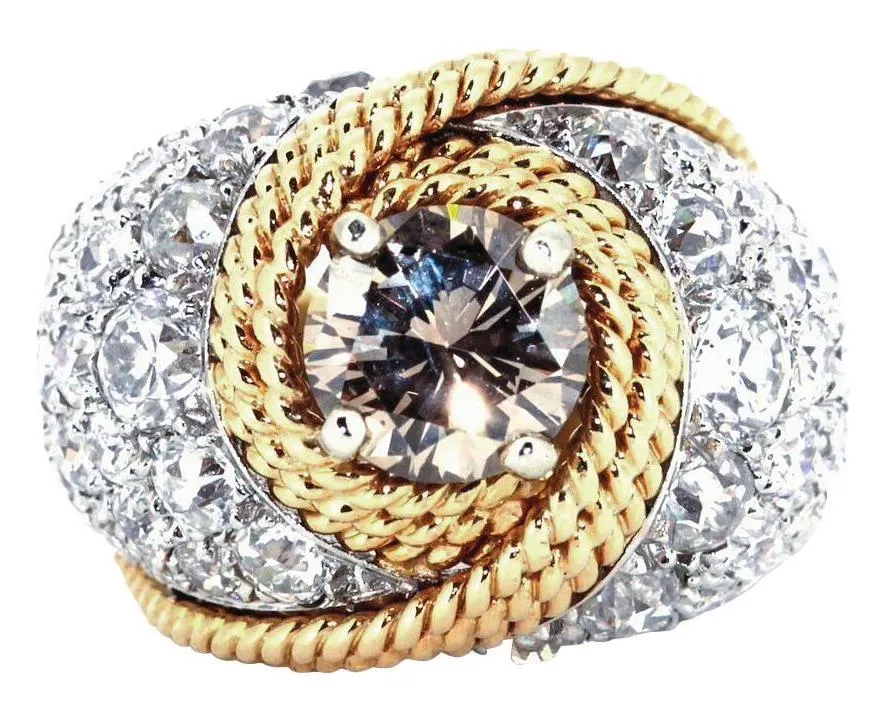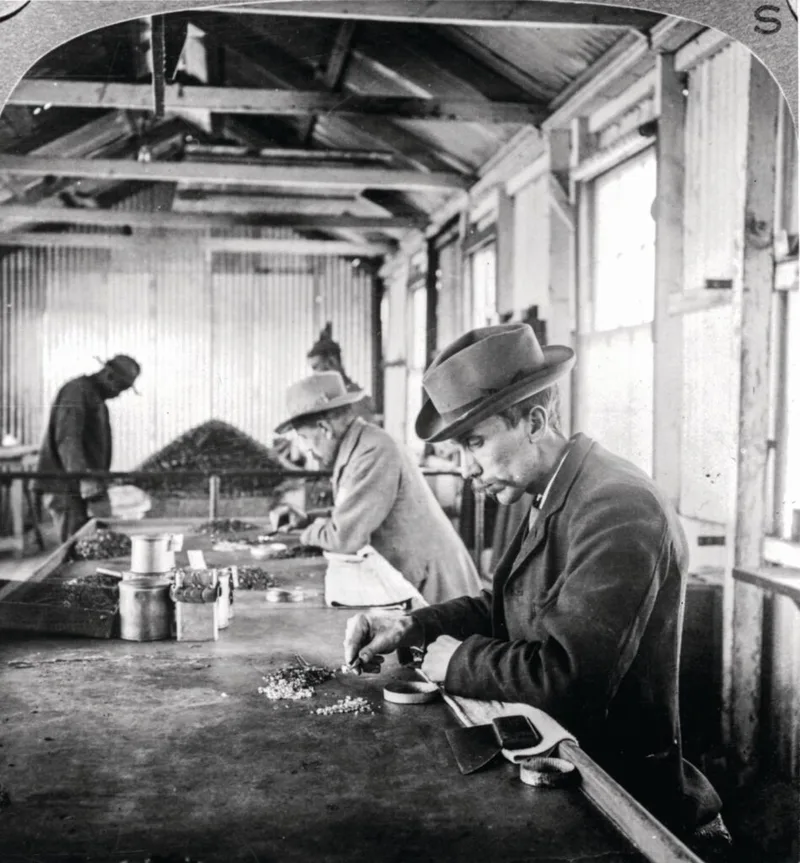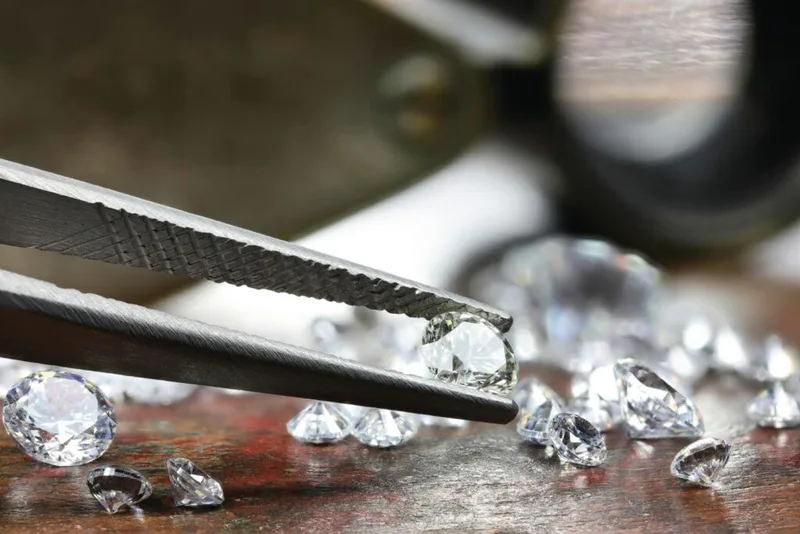Diamonds may be forever, and also a girl’s best friend, as the song lyrics say, but finding the diamond of your dreams can be a nerve-racking experience.
Should you go for a princess, marquise or pear shape? Are you looking for a clear white stone, or perhaps a fancy colour, like yellow, cognac or even blue? Is this 0.9-carat VS2 a better option than the 0.75 VS1?
Sarah Hardy, jewellery consultant at the North Yorkshire auction house Tennants, says it’s easy to become bamboozled with all the technical details.

‘Buying a piece of diamond jewellery is a very significant event for most people, and the emotions involved can be even more significant than the money – they might be buying with an inheritance or for a special anniversary,’ she says.
‘And it’s easy to see how people become overly absorbed with the so-called 4Cs – carat weight, colour, clarity and cut – or get lost in the detail of a gemmological laboratory report.
These reports give you very precise technical information about each stone, such as whether there are any inclusions, the quality of the cutting, even down to the way the stone is polished. But to most people, information like VS2 or saying it’s an I-colour isn’t going to mean very much.’

Saul Greenstein, director of S. Greenstein & Co Ltd, a London-based company specialising in antique diamond engagement jewellery, stresses the importance of keeping an open mind.
‘When they come to see us, people sometimes have a firm idea of what they want. It’s an important purchase, so it’s understandable that they do a lot of research in advance and even come with a list of requirements. More often than not, once they see the options in person, they end up choosing something completely different.’
Another drawback of relying solely on technical data is that the 4Cs were introduced in the 20th century. However, by these modern standards, the cutting of a lot of antique stones would potentially be graded poorly.

Until the 1900s, diamonds were faceted by hand, without the precision of computer-assisted tools and extreme magnification available to modern gem-stone cutters. ‘Lots of people prefer antique old-cut stones – even if by the technical standards used to rate the retail value of modern diamonds they might come out relatively badly. But they fall in love with their originality and uniqueness,’ says Saul.
Likewise, the colour of stones dating to the pre-1900s can appear quite tinted by later commercial standards. ‘That doesn’t mean they’re ugly,’ says Sarah. ‘They definitely have their own charm, and maybe a muted stone will suit you more. A flawless D-grade diamond in a bright white setting could look quite harsh on pale white skin, for example.
Perhaps you already own a special diamond – something with sentimental value – but you just don’t like the way it’s set, so it stays hidden in a drawer. ‘It’s normally straightforward to do something like transform an unworn ring into a pendant,’ says Saul.

‘A huge amount of antique jewellery has been altered and reset in this way. In the Art Deco period, lots of stones were taken out of what was seen as old-fashioned Victorian jewellery and reworked into something more modern.’
But before radically redesigning granny’s diamond brooch, do bear in mind that the value of older diamond jewellery can also be in the setting. ‘They’re often made in 18-carat gold or platinum, and they use far more precious metal than modern factory-made pieces, which economise in every conceivable way, cutting corners wherever possible.
'Some of the old settings are so incredibly detailed and complex, nowadays you would struggle to find anyone with the skill to replicate them, and it probably wouldn’t be viable to make them on a commercial basis,’ Saul explains.

In the last few years, lab-grown diamonds have increased in popularity and become very contentious. High-carat diamonds are now being manufactured on a large scale, using industrial methods that mimic the geological processes that create natural diamonds. What took millions of years to form in the earth can be created in a matter of weeks in a factory.
‘Lab-grown diamonds have completely changed the game, and not necessarily in a good way,’ says Saul. ‘In the same way that cultured pearls destroyed the market for natural saltwater pearls in the early 20th century, there’s a danger that lab-grown diamonds will do the same,’ he continues.
‘Some people argue they are more ethical, as they haven’t been taken out of the ground, they’re not associated with conflicts on continents like Africa, and they definitely make diamonds more accessible to a greater number of people. But the retail mark up on them is huge, and there is no proven consistent secondary market.’

The risk for buyers is that it’s impossible to tell the difference between a natural and lab-grown stone, even with a jeweller’s loupe. Their chemical composition is exactly the same. It’s only by sending a stone to a gemmological laboratory for tests that you can be 100 per cent sure of its origin.
The benefit of opting for a natural stone is that, if you decide to sell your diamond at a later date, it should hold its value much better – lab-grown diamonds depreciate significantly in value on the second-hand market.
This brings Saul back to the importance of taking time over your decision, and buying from someone you trust: ‘If you’re buying from a dealer, they should offer you a full written description and insurance valuation, and with a high-value stone, a gemmological certificate from a specialist lab that authenticates it is advisable.’

The 4cs: Gen up on gems
The term carat, referring to weight, has been used for centuries, but until the 20th century the industry lacked a precise system for grading the other qualities of gems accurately.
In the 1930s, Robert Shipley founded the Gemological Institute of America (GIA) to provide formal training to aspiring jewellers. He also established a system of classification – simplified as the 4Cs – which has since become the international standard.
Carat: Refers to the total weight of the gem.
Colour: Rated D to Z, with D a colourless stone and Z light yellow, grey or brown. (Formerly, the trade sometimes used A, B and C to describe a diamond’s tint, so to avoid any confusion Shipley’s new scale started at D.)
Clarity: Blemishes assessed on a scale from flawless to included, under 10X magnification. Uses abbreviations like IF (internally flawless), VVSI1 (very very slightly included 1) down to I3 (included, with 3 the lowest grade).
Cut: An assessment of the stone’s overall shape (round brilliant, princess, cushion, marquise etc) as well as the quality of the faceting, ranging from excellent to poor.

All in the detail: Looking beyond carats, colour, clarity and cut…
The 4Cs are just the start. A full gemmological laboratory report includes even more information, for example the quality of the diamond’s polish, its precise proportions and measurements, and a diagram indicating the position of inclusions, and their type.
Delving into some of the detail of diamonds’ grading can help to understand why seemingly very similar diamonds can achieve different prices at auction. In March 2020, Tennants sold two diamond rings, which at first glance seemed quite similar.
Lot 1132, a 1.05-carat round brilliant with an H to I colour, made £1,200. Lot 1054, while only slightly bigger at 1.10 carats and also with a colour grade of H to I, reached £1,500. Why?
Sarah Hardy says the extra third on the hammer price is probably explained by the appeal of the old-cut stone, and the better clarity – the first diamond was included, the second only slightly so.







